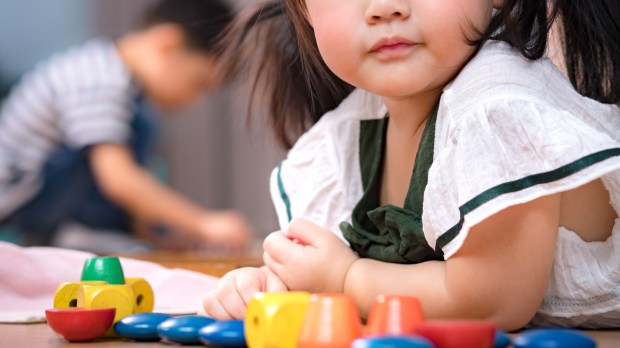Lenten Campaign 2025
This content is free of charge, as are all our articles.
Support us with a donation that is tax-deductible and enable us to continue to reach millions of readers.
The Montessori method of education has soared in popularity, especially for the preschool years. Many Catholic parents choose a Montessori education knowing that its founder, Maria Montessori, was Catholic and that the method is very respectful toward children, in keeping with Catholic beliefs about the dignity of the human person at all ages. As many schools will be closed or doing distance learning this fall, parents are looking for ways to bring Montessori principles into their life at home. Aleteia had the opportunity to interview Becky Winstead, Lead Guide for the Children’s House at Siena Academy, one of the first Catholic parochial schools to adopt the Montessori method in the United States.
What are the key principles of Montessori philosophy that could apply to life in the home?
This is a little difficult to answer because the Montessori philosophy is such a holistic one. It’s hard to practice just one or two things without grasping the whole. The same is true of understanding the child (and human beings), especially in regards to a school setting: We aren’t just beings who read and write and do math. We have a mind and a body and a soul. We have feelings, memories, decisions, goals, physical needs and wants, spiritual desires, a relationship with others and a relationship with God.

Read more:
The Montessori rule that changed the way I parent
In order to function properly and to be our best selves, all of those things must work together harmoniously. Everything a child does is for the purpose of constructing himself/herself. That is their task. Having that “big picture” in mind, though, I’ll break down the Montessori philosophy into some smaller parts.
- Children are sensorial learners. This is especially true for very young children who take in the world around them through their senses and form an understanding based upon this knowledge. Maria Montessori said, “The hand is the instrument of the mind,” meaning that our minds begin to understand something when we experience it physically first. Providing children with many opportunities to see, touch, hear, smell, and taste the world around them literally (physically) forms their brain and its pathways.
- Children from the ages of 0 to 6 have something Maria Montessori called the Absorbent Mind. Many people have heard that children are like sponges and just soak everything up. It’s true! From the age of 0 to about 3 years old, children take in everything around them and unconsciously acquire skills (such as language, or learning how to crawl and walk). From about the age of 3 until around the age of 6, children still have the ability to soak up information like sponges, but they begin to consciously seek out experiences and use the skills they have acquired, through the following ways:
- Independence: Children have an incredible capacity to do many things on their own. The young child’s motto is “help me to do it by myself.” Children need to be shown how to do something first and then given the freedom to try it on their own. Trying it on their own doesn’t necessarily mean abandoning them to do it all alone (although it could!), but giving them the opportunity to try (and fail!). Perfection comes from lots of repetition.
- Observation: Humans like to observe. It’s how we learn to experiment and draw conclusions. Observation is necessary for the child, so that they can make mistakes and learn from their mistakes. It’s also necessary for the adults and parents in their lives: Observation tells us what materials or concepts a child is interested and ready for, when and how to direct a child to work, and when they might need to be shown again how to use a material.
- Movement: Children need movement the way they need air. They are not meant to sit still and listen for hours on end. Children CAN sit in one place and explore with something for a very long time, but the exploration still requires movement. For example, in our classrooms, a child might sit at a table and polish a piece of silver for half an hour. While they are sitting in one place for a length of time, they are strengthening their fine motor skills through applying polish, and rubbing it in and working hard to make that piece of metal shine! And when they clean up, they are getting up out of their chair to throw things away, and wash out their little bowl that has remaining polish in it. They dry the bowl off. They return back to their chair and place everything back on the tray and put it away on the shelf. Movement doesn’t always have to be running around (although some children need more big movement like that). It is purposeful.
- Language: Language is essential to humanity. It’s part of our nature. It is how we communicate what we have experienced. It’s how we connect with others either vocally or written down. Children need plenty of opportunities for language, whether that means introducing new vocabulary (especially for young children), having a conversation, sharing an observation, telling a story, writing a story, praying, singing songs, and so forth.
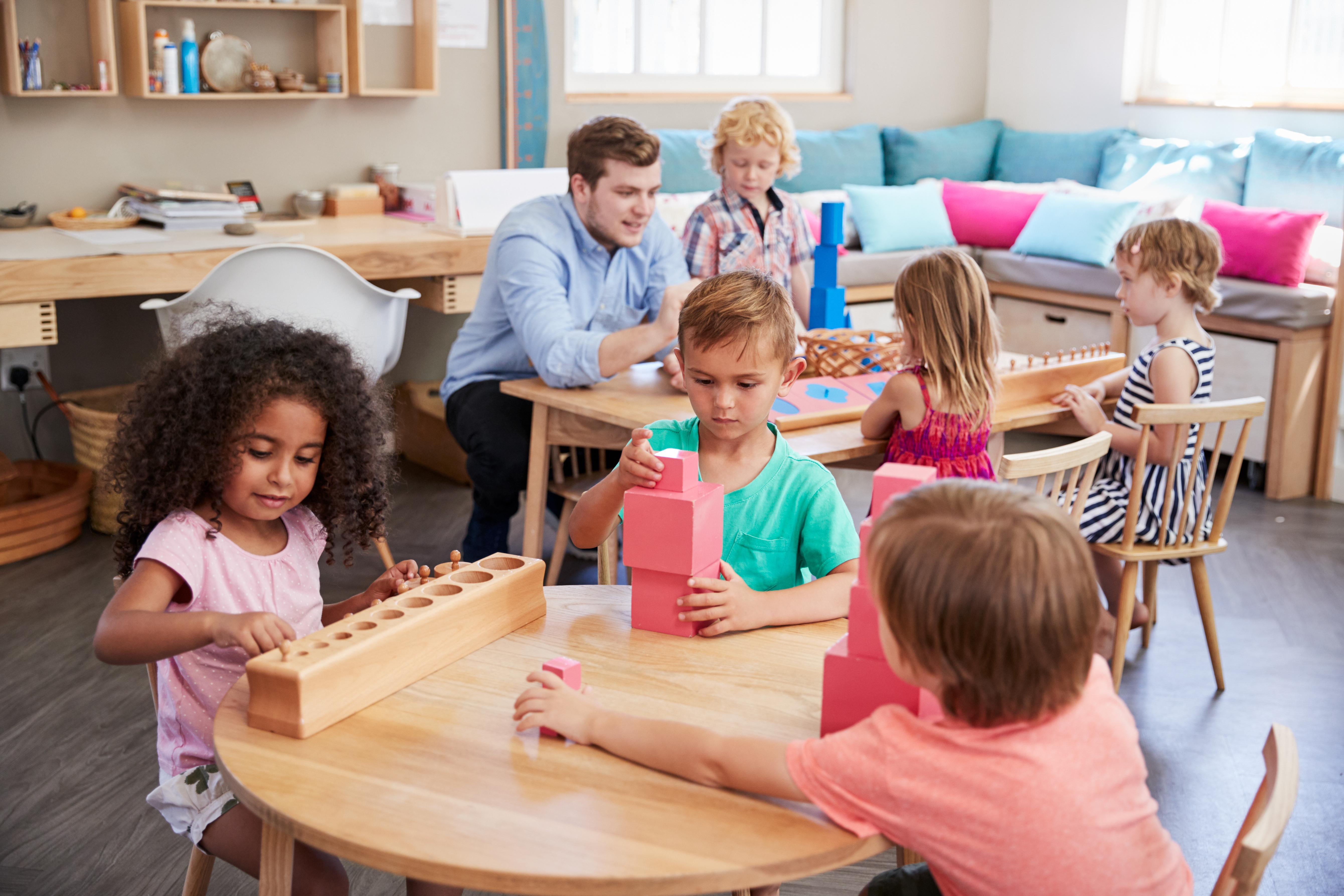
Are there any activities or materials a parent could plan to do at home to support this kind of learning from home?
Absolutely! When the children are at school, they have the sense that it is their environment and they take great pleasure in taking care of it. The same should be true for their homes! Just as children contribute to their classroom environment, they should also be given opportunities to contribute to their home environment. It is their place to learn and grow and to take care of.
Involving children in the day to day activities at home is a wonderful place to start. Younger children love to participate in practically anything, especially if it is something they’ve seen their older siblings or parents do, and older children and teenagers can help out in many ways as well.
- Young children love to sweep floors and wash tables, fold clothes, wash their hands, set the table, put dishes away, make snacks, and so on.
- Older children who have acquired bigger skills and want more responsibility can take on the task of making lunch or dinner (and of course baking), helping with the yard and gardening, helping out with laundry, washing the car, helping out with younger siblings, and so forth.
- Teenage children might find it exciting (and feel like their thoughts and opinions are valued) to come up with a grocery list for the week, or find ways to earn money either through special projects at home, or helping out in the neighborhood. They might have their own plot in the yard to raise a garden, which they could then use to contribute back to the family by selling their produce or using the vegetables for meals.
These kinds of activities are also teaching children language and math just by their very nature! Think about all the ways a child would need to use language and math to bake a simple recipe. Or how a child would need to be able to calculate how much food they can buy at the grocery store with the amount of money they are given for grocery shopping. Real-life experiences give children so many practical ways of using math and language skills.
Are there any materials a parent could use to support Montessori education in the home?
For children in the 3- to 6-year old age range, my two recommendations for language are the Sandpaper Letters (available as board books) and a Movable Alphabet. As for Math, we use a material called the Golden Beads in the classroom, similar this decimal bead system or this cube system.
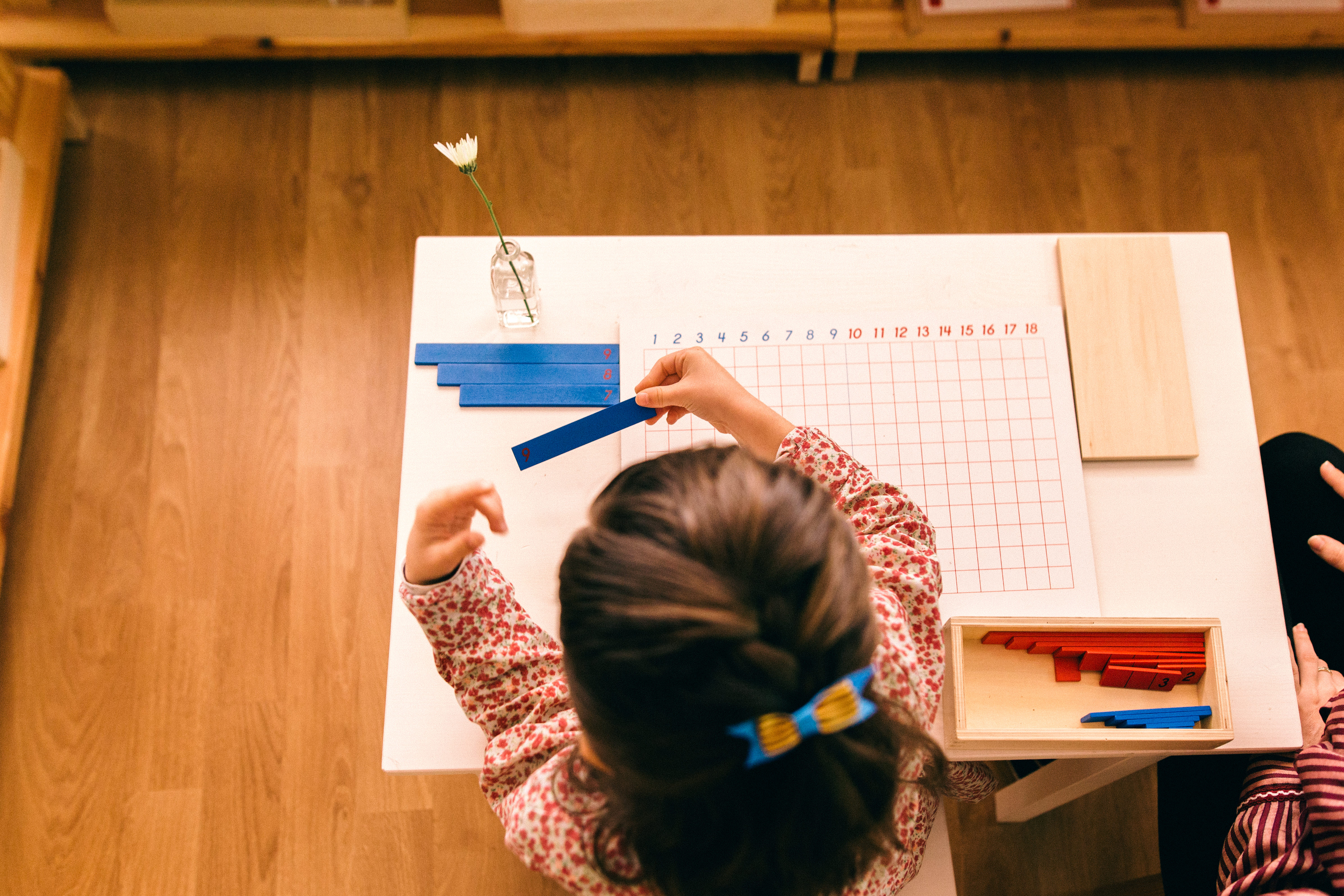
Sewing is also something children of all ages absolutely love to do. Young children can do simple embroidery patterns, and older children can make pillows and pouches and all sorts of things. Felt can be used for so many sewing projects!
If parents are looking for more ideas, the website All Day Primary has so many wonderful print outs and resources for parents to use at home.
What is the most important thing for a parent to know about applying Montessori philosophy to life in the family home?
Preparation of the environment is essential for children to thrive. Children need a space to work in where they can concentrate and have the freedom to explore. In our classrooms, we place shelves all around the room with materials for the children to choose from. Children are only allowed to use the materials they’ve had a lesson on, but they may use these materials at any time throughout the day and use them for as long as they want. When they are finished, they are responsible for cleaning it up and placing it back on the shelf for the next person to use.
This whole process—taking an item off the shelf, working with the material, cleaning it up and putting it away—is presented in a lesson so that the child knows where to find it, how to use it, and how to clean it up. I think one of the challenges with parents is that they feel comfortable giving their child something to work with, but when the child is finished, they don’t know how to clean it up or where it goes. Whenever I’m giving a child a lesson in the classroom, after I show them how to work with the material, I tell them, “Now I’d like to show you how to clean it up!” Cleaning up becomes part of working with the material. And sometimes children need to be shown a couple of times how to work with a material and how to put it all away, which is fine. Process over product.
It’s important not to overwhelm children with too many things, especially young children. If parents can find a spot for a shelf in a room in the house, and put maybe 5 or 6 materials for the child to work with throughout the week, that is plenty. Items should be switched out from time to time so that the children can learn new concepts and skills, but also for the purpose of novelty. We all love novelty!
I’d recommend putting a couple of Practical Life items on the shelf (for example, a polishing work, table washing, and folding), a couple of Sensorial items (parents can make their own smelling bottles, or sound bottles, a basket with several different textured materials to feel, and so forth), some Sandpaper Letters and a Movable Alphabet, some paper or a small chalkboard/whiteboard to draw on or practice writing letters and numbers, a box of beans or buttons or something that children can count with and practice addition or subtraction with (age appropriately), and maybe some sewing, some clay, or some kind of art materials to explore with.
Lastly, preparation of the adult may be the most important thing a parent can do in the home. Children learn by doing and that includes the way they speak, the way the move, the way they react to something stressful or scary, the way they handle their emotions. I imagine all of us have felt the stress of quarantine. Maybe even some of us are scared. Imagine your children and how this must feel to them!
The biggest thing we can give children is our love. They need to feel safe and wrapped in our love. That might look different for different people, especially families where both parents are working and trying to balance multiple children’s school work and schedules. Routines are hugely important, and so is making time to connect with each other. Take the time to observe your children and listen to them.
When conflict arises, have a conversation about it and ask questions or share your observations. An example might be, “I noticed you seem very upset right now! You are crying and I heard your voice get very loud. Did something happen? Would you like to tell me?” If another sibling is involved, ask them the same question. Try listening without judgement, just gathering the facts.See if your children have a solution and provide a couple ideas, too. Something like, “It seems like both of you really want to use this toy. But there is only one of this toy. How can we work together so that you both have a turn?”
Let your “yes” mean yes and your “no” mean no. Giving a firm, yet gentle “no” does not mean you are angry or mean, it means you have made a loving decision. If your children are upset by your “no,” acknowledge and empathize with their sadness and frustration, but remain true to your decision.
It is also helpful to children when they know your emotions. At school, there are moments where I tell my students, “I am just feeling so overwhelmed right now and need a minute to take a couple of deep breaths and calm down. I’ll be back in a little while so that we can have a conversation.” Language around emotions is so important for children to observe. And it is also important that we, as adults, are prepared to talk to children. Sometimes conversations need to happen in the heat of the moment, but constructive conversation is at its best when we are calm. Remember to be patient with yourselves, too, because life is a process and virtues take time to grow (sometimes even a lifetime!).
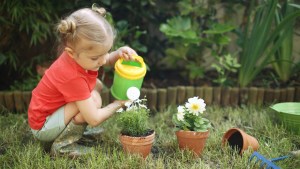
Read more:
Want a more self-reliant and confident child? Tap into these Montessori secrets at home
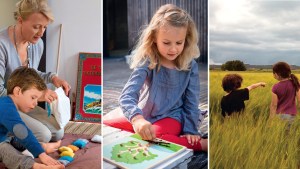
Read more:
Can’t afford a Montessori school? Try the toys!
